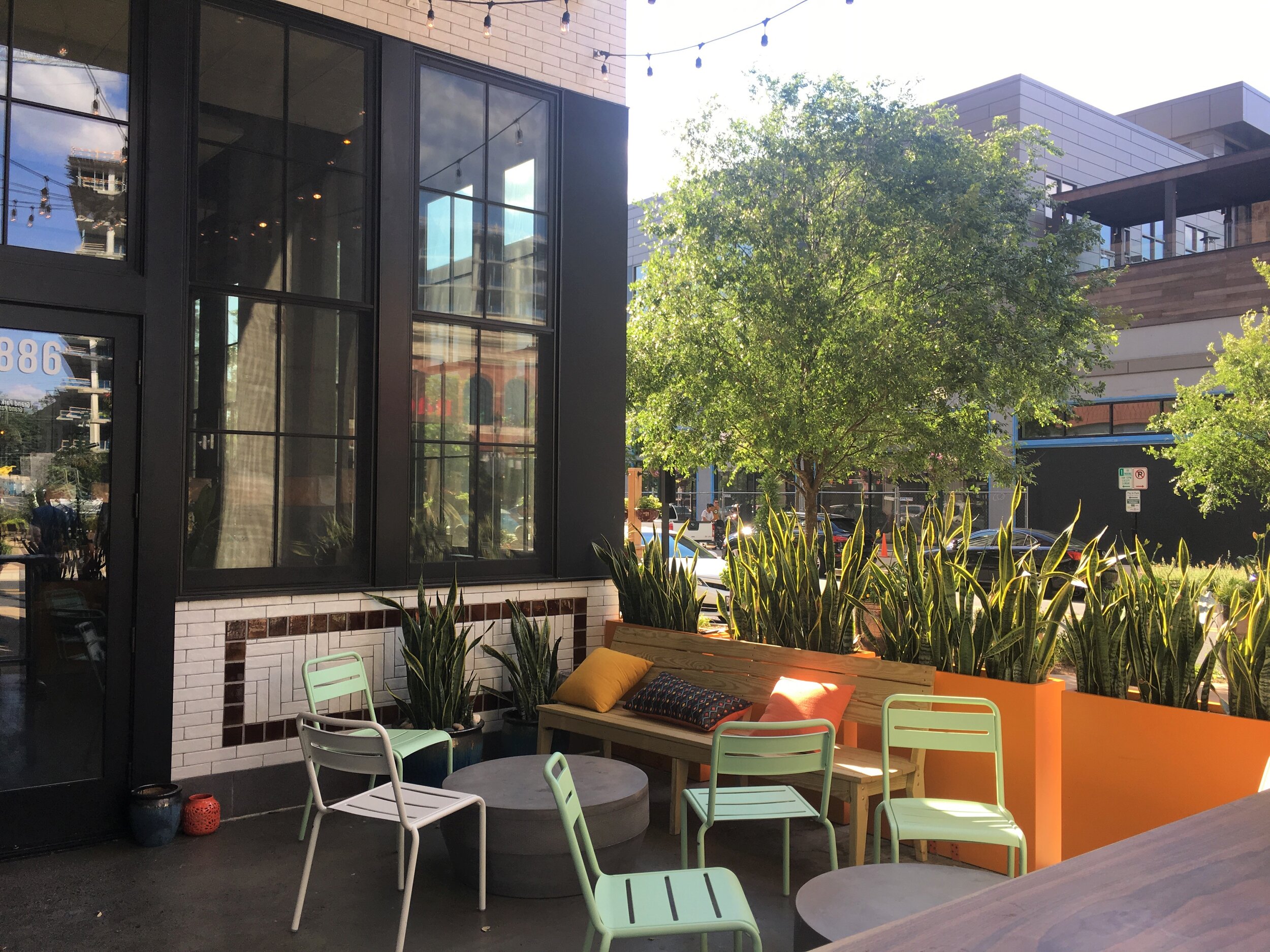“Why are tree canopies in urban areas necessary?”
With more studies and educational materials becoming available, we no doubt have all agreed that trees offer many environmental benefits: such as reducing erosion, helping stormwater management, providing shade and absorbing pollution, etc.
Trees also benefit the other two aspects of the triple bottom line: Economic and Social. This article would like to share another perspective on those trees in our neighborhoods.
Source: the international society of arboriculture “Trees are Good-Benefits of Trees”, 2007
Tree Coverage Vs. Neighborhood’s Prosperity
“Trees are not merely good for us; they bring out good in us.”
What would you like to see when you look outside? See the images below.
Trees and Neighborhood’s Happiness
A study by professors Ming Kuo and William C Sullivan proved a positive impact of green spaces on our well-being.
“Residents living in ‘greener’ surroundings report lower levels of fear, fewer incivilities, and less aggressive and violent behavior. And residents living in relatively barren buildings reported more aggression and violence than their counterparts in greener buildings. Moreover, levels of mental fatigue were higher in barren buildings, and aggression accompanied mental fatigue.”
The above statement is what they found out while they investigated residents’ behavior in a neighborhood on the southern side of Chicago.
Trees as Neighborhood’s Income Indicator
Moreover, recent studies also show the tree coverage associated with the neighborhood’s income inequality. For example, the District of Columbia’s wealthiest neighborhood has 42 percent more tree coverage than destitute neighborhoods.
The reasons for this phenomenon are complex, yet researchers suspect that people who own their homes are more likely to take care of their trees than renters and more likely to lobby their governments to plant or maintain trees at places close to their homes. They are also more educated to embrace tree planting since they understand trees’ benefits. On the other hand, residents who make fewer wages and often commute longer distances are less likely to take care of their surroundings.
A Tiny Discovery
While curious if this “tree coverage indicates neighborhood stability” could be applied to any place, we explored the web tool iTree. We collected the tree coverage data in these four neighborhoods: Four Corners, Hillandale, Silver Spring, and Adelphi.
Study Area: Four Corners, Hillandale, Silver Spring and Adelphi neighborhoods in Maryland.
The demographic data is via Census Reporter , The crime rate data is via Blest Places
Combining iTree’s data with the recent census data summarized in the table below, you can see a correlation between tree coverage and median household income. It also shows that higher tree coverage has a lower crime rate. Interestingly, the capital beltway (I-495) divides these neighborhoods into slightly affluent and somewhat impoverished areas.
A Question for Us
You might argue this small quantity of samples is not qualified to give an overall trend. But we still need to ask, “Will our neighborhood’s formula similar to the fate of the Ida B Well Housing Project or even the high-rises in Pruitt-Igoe?” “How can we use trees as powerful catalysts, like those magic wands, to bring a barren place to alive?”
The image on the Left: When a neighborhood has lower income, fewer trees are planted and maintained, more aggressive behavior occurs, more social problems arise, the neighborhood’s value drops, and more geographical turnover.
The image on the right: To make a neighborhood has less turnover, plant more trees, less aggressive behavior occurs, neighborhood’s value rises, more trees are planted and maintained, residents are more pleased and stay longer, neighborhood’s income stabilized and rises.
In order to get actionable advice, we turn to the Sustainable SITES reference guide.
Prioritizing Tree Planting, Started with ConseThe image on the Left:
Sustainable SITES has set up a decision-making hierarchy when we begin to look at a project site:
Conserve > Manage> Restore> Generate.
There is also a guideline to refer to when we try to get the project's sustainable credits. Available credits are:
[Sustainable SITES] Credit 4.8: Optimize Biomass
Conserve and restore vegetation biomass on-site to a level appropriate to the site's region. A biomass density index (BDI) value is needed to determine the existing and proposed vegetation density. For example, trees with understory can get 6 (the most) biomass density values than the rest of the vegetations. The calculation as follow:
Biomass Density Value x Percent Total Site Area = BDI
[LEED Neighborhood Development] Credit: Tree-Line and Shaded Streetscape
Following these requirements could help the project earn points.
Option 1: Provide trees at intervals of no more than 50 feet long at least 60%of the total existing and planned block length within the project and on the project side of blocks bordering the project, between the vehicle travel and walkways.
Option 2: Provide shade from trees or permanent structures over at least 40% of the total length of existing and planned sidewalks within or bordering the project. Trees must provide shade within ten years of landscape installation. Use the estimated crown diameter to calculate the length of the sidewalk shaded.
Resources and Reference:
Ming Kuo, William C Sullivan, (2001, July). "Aggression and Violence in the inner City," via ResearchGate.net
Wen-Ching Chuang, Christopher G Boone, Dexter H. Locke, J. Morgan Grove, Ali Whitmer, Geoffery Buckley, Sainan Zhang, (2017, March). “Tree Canopy Change and Neighborhood Stability: A comparative Analysis of Washington DC and Baltimore, MD”, via ScienceDirect.com.
Schwarz K, Fragkias M, Boone CG, Zhou W, McHale M, Grove JM, et, (2015, April). “Trees Grow on Money: Urban Tree Canopy Cover and Environmental Justice”, journals.plos.org.
Base on this article, they use Meta Analysis to exam if the result will differ systematically with various sites characters. Research done by Ed Gerrish, Shannon Lea Watkins, (2017, September). “The Relationship Between Urban Forests and Income: A Meta-Analysis”, via ScienceDirect.com.
Ida B Well Housing Project, by Wikipedia.
First published: 2021.02.24, Updated: 2021.06.06, 2023.04.03











